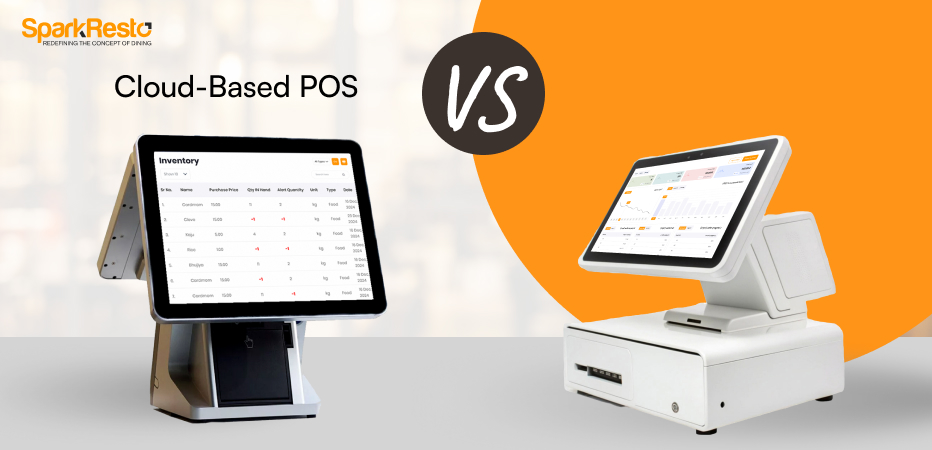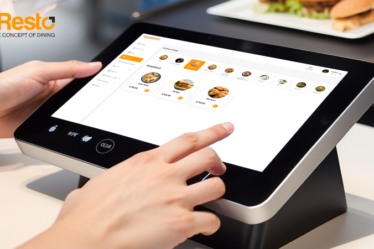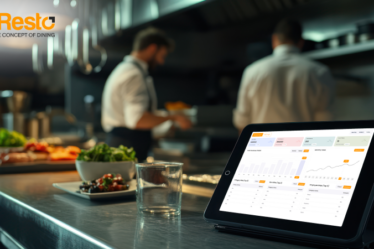
Imagine standing on a busy night at your restaurant! The tables are occupied, waiters are rushing to and fro, and orders are coming in at an alarming rate. At that moment, your point-of-sale system can be your friend or a severe pain in the head. A restaurant should run smoothly, with everything running tip-top.
The heart of a restaurant is a POS system that keeps everything moving. Take an order, keep an eye on what you sell, and take care of the money; it can do it all. But should you choose cloud-based POS or on-premise POS? A cloud vs on-premise POS is a big decision. Both have pros and cons. If you want flexibility and remote access, cloud-based is great. On-premise is better if you prefer full control and don’t want to rely on the internet. Depending on the business needs, you will find a suitable solution for your restaurant’s unique daily operations.
In this blog, we will compare cloud-based POS with an on-premise POS system to find out which one is better for restaurants. The key differences between these two types of POS systems will be discussed in this article, thus aiding you in choosing the best-suited POS system for your restaurant.
Comparison: Cloud vs On-Premise POS
Selecting the right POS system is everything for a restaurant. Comparison between POS software will give you a better shot between a flexible cloud-based POS system and a controllable on-premise POS. This guide explains their differences to find the best fit. Let’s Dive in:
#1. Cost Structure
- A cloud-based POS has a monthly or yearly fee. You don’t need to buy expensive hardware. The starting cost is low, but you must keep paying for the service. Some providers also charge extra for updates and features.
- An on-premise POS needs a big payment upfront. You buy the hardware and software. There are no monthly fees. But you may need to pay for repairs, updates, and IT help. If the system gets old, upgrading can be costly.
#2. Accessibility & Remote Management
- The cloud-based POS software for restaurants enables you to track sales, inventory, and reports from any location. It is perfect for managing multiple restaurants from one location.
- An on-premise POS only works inside the restaurant. You must be there to see reports or change settings. If you manage many locations, this can be a problem.
#3. Security & Data Protection
- A cloud-based POS keeps data online. Most providers use security tools and backups to protect your information. However, your data could be at risk if the provider has a problem.
- An on-premise restaurant POS systems stores data inside the restaurant. You control the security. But if there is a fire, system crash, or theft, data can be lost unless you back it up.
#4. Internet Dependence & Reliability
- A cloud-based POS needs the internet to work properly. If the internet is slow or down, transactions may be delayed. Some systems have an offline mode, but not all features will work.
- An on-premise POS does not need the internet to run. Sales and orders work normally even if the internet goes down. But you won’t get cloud features like online reports or remote access.
#5. Software Updates & Maintenance
- A cloud-based POS gets automatic updates. The provider fixes bugs, adds new features, and improves security. You don’t have to do anything.
- An on-premise POS needs manual updates. You may have to buy new software, update the system, or hire IT help. If you skip updates, the system may become slow or unsafe.
#6. Scalability & Flexibility
- A cloud-based POS is easy to upgrade. You can add more locations, users, or features anytime. It works well for growing restaurants.
- An on-premise POS is harder to expand. Adding new locations or features costs more and may need new hardware. It is better for small restaurants with no plans to grow.
Which One is Right for Your Restaurant?
It’s time to choose the ideal point-of-sale system for your business now that we’ve looked at the differences between on-premises and cloud-based systems. Because every restaurant has its way of operating, the right choice depends on your management style. Let’s make this decision easier.
#1. Cloud-based systems represent a good choice when:
- Remote access: If you want to be able to check your sales, orders, or reports from anywhere, whether from home or somewhere on vacation.
- Automatic updates: The system does the updates for you, so you’ll never have to worry about finding out when upgrades are due, or worrying about security issues at different locations.
- Low upfront cost: The investment you’ll have to make to start this venture is very little. Instead, you pay a small monthly or yearly fee.
- Easy to expand: If you plan to open more restaurants, adding a new location to your cloud POS is quick and simple.
But as a coin has two sides, so does any POS system. With the great benefits of using a cloud-based POS, there is a little disadvantage too. If your internet is slow or goes down, the POS may not work properly. Some systems have an offline mode, but not all features will be available.
#2. An on-premise POS is a good choice if you prefer:
- No internet needed: The system runs on a local computer, so it works even if your internet is slow or disconnected.
- One-time payment: You buy the software and hardware once instead of paying a monthly or yearly fee.
- Full control over data: Your sales and customer data stay in your restaurant and don’t rely on an outside company.
But there can be some downsides to using it too. An on-premise POS is good but it has no remote access. It means that you have to be inside the restaurant to check sales, inventory, or reports. Every time, the software will require manual updates and IT support if something goes wrong.
Choosing the Right POS for Your Restaurant
The right choice depends on what is most essential for your restaurant. Here’s a simple way to decide:
#1. Pick a cloud-based POS if:
- You have multiple locations and want an easy way to track sales.
- You don’t want to deal with software updates or maintenance.
#2. Pick an on-premise POS if:
- You want complete control over your data.
- You prefer a one-time payment instead of ongoing costs.
Cloud-based POS is best suited for those who need an easy-to-use system that auto-updates and allows for close remote monitoring. On the other hand, an on-premise POS allows true control and works offline, which in most cases might become a great choice.
No matter which option you choose, the right POS system will provide your restaurant with streamlined operations, faster order processes, and total organization.
Conclusion
How your restaurant runs will affect your decision on the right POS system to use. If you’re a free spirit, the decision between a cloud-based POS vs. an on-premise POS should be easy. One-Cloud allows you to check sales from anywhere, updates automatically, and grows with your business. But if your internet is unreliable, it might slow you down. An on-premise POS will, however, meet your wishes for total control, work without the internet, and will be free of monthly charges. But you must handle updates and can’t check reports remotely. Consider your daily needs when choosing a POS system. Still unsure? Evaluate your restaurant’s needs and start a free trial of a Sparkresto POS system today! No matter what you choose, a functional POS will make order-taking easy, sales tracking easier, and will ensure your restaurant flows smoothly.


